Top 50+ SEO Questions and Answers (Updated for 2023)
SEO, or search engine optimization, is the process of improving the visibility and ranking of a website or web page in search engine results pages (SERPs). This is done by optimizing the website’s content, structure, and links.
SEO is important because it can help businesses to reach a wider audience and attract more visitors to their website. When a website ranks high in SERPs, it is more likely to be seen by potential customers. This can lead to increased traffic, sales, and leads
There are two main types of SEO: on-page SEO and off-page SEO. On-page SEO refers to the optimization of the website itself, such as the content, structure, and code. Off-page SEO refers to the optimization of the website’s links from other websites.
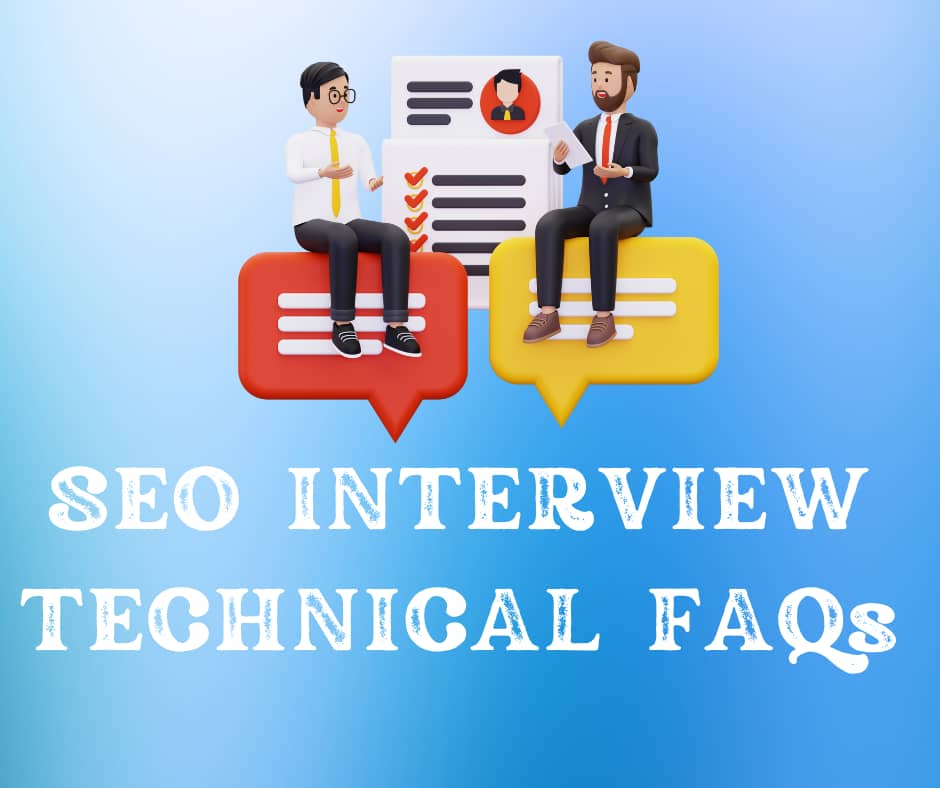
In this BLOG we covered most of the SEO topics along with FAQs
1.What is the main purpose of SEO In Digital Marketing?
SEO stands for search engine optimization, and it is the process of improving the visibility and ranking of a website or web page
In Search engine results pages (SERPs). When someone searches for a keyword or phrase related to a business’s products or services, SEO helps the business’s website appear higher in the search results. This can lead to more traffic, leads, and sales for the business.
SEO is an important part of digital marketing because it is one of the most effective ways to reach potential customers. Billions of people use search engines every day to find information and products, so having a high ranking in SERPs is essential for businesses that want to be successful online.
Here are some of the benefits of SEO for digital marketing:
Increased traffic
Improved brand awareness:
Increased leads and sales
2. Which Factors are Most Important for Google Ranking?
The most important Google ranking factors are:
High-quality content: Google wants to provide its users with the most relevant and informative content possible.
Backlinks: Backlinks are links from other websites to your own.
Search intent: Google tries to figure out what the user is actually looking for when they type in a search query.
Website loading speed: Google users don’t want to wait for websites to load. Google takes website loading speed into account when ranking websites.
Mobile-friendliness: More and more people are using their smartphones and tablets to access the internet.
Domain Authority
Content Type
Content Freshness
3. Tell me about Organic Search Result?
An organic search result is a listing in a search engine results page (SERP) that is not paid for. Organic search results are ranked based on a variety of factors, including the relevance of the website to the search query, the quality of the website’s content, and the number and quality of backlinks to the website.
Here are some examples of organic search results:
you search for “shoes” A website that sells shoes that appears when
A blog post about how to cook spaghetti that appears when you search for “how to cook spaghetti”
A Wikipedia article about the history of the United States that appears when you search for “history of the United States”

4. What is the Importance of keyword Research in SEO?
Keyword research is the process of identifying the search terms that people are using to find information or products like yours. It’s an essential part of SEO, as it helps you to optimize your website and content for the keywords that your target audience is searching for
It helps you to understand your target audience
It helps you to improve your website’s ranking in search engine results pages (SERPs)
It helps you to attract more traffic to your website.
It helps you to improve your RO
Here is a blog-like explanation of the different types of keywords in SEO:
5.Can you Explain different types of keywords in SEO?
Keywords are the words and phrases that people use when they search for information or products online. SEO stands for search engine optimization, and it’s the process of optimizing your website and content for the keywords that your target audience is searching for.
Different types of keywords in SEO
Short-tail keywords
Long-tail keywords:
Informational keywords
Commercial keywords:
Transactional keywords:
6.Differentiate long-tail vs short-tail keywords?
Keywords are the words and phrases that people use when they search for information or products online. In SEO, keywords are used to optimize websites and content so that they rank higher in search engine results pages (SERPs).
There are two main types of keywords: long-tail and short-tail.
Short-tail keywords are broad, general keywords that are typically one or two words long. They have a high search volume, but they’re also very competitive. Examples of short-tail keywords include “SEO,” “shoes,” and “dog food.”
Long-tail keywords are more specific and less competitive than short-tail keywords. They typically have a lower search volume, but they’re more likely to convert visitors into customers. Examples of long-tail keywords include “best SEO tips for beginners,” “women’s running shoes for wide feet,” and “grain-free dog food.”

7. What do you know about keyword density in SEO?
Keyword density is the percentage of times a target keyword appears on a web page compared to the total number of words on the page. It’s one of the many factors that search engines consider when ranking websites in search results pages (SERPs).
Search engines are more focused on the quality and relevance of the content on a web page. This means that it’s more important to create high-quality content that is relevant to your target audience than it is to stuff your content with keywords.
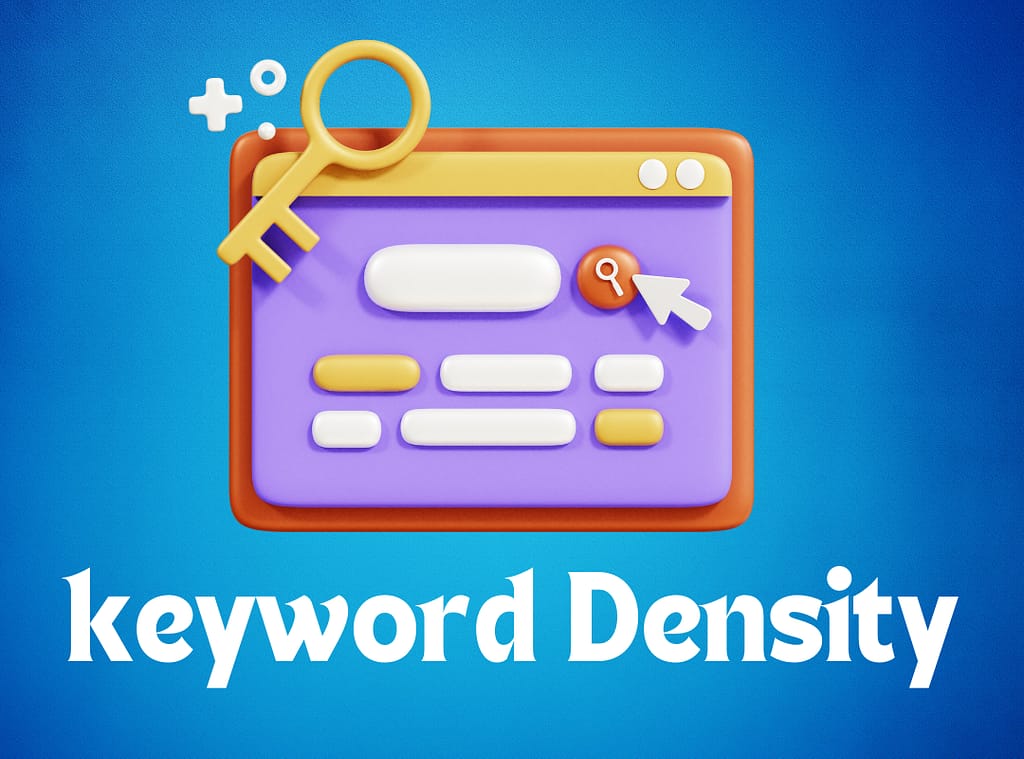
8. “Why do you feel a Suitable Candidate for This Role?”
I feel that I am a suitable candidate for this role because I have the skills, experience, and motivation to be successful.
I also have the skills and knowledge necessary to be successful in this role.
I am a quick learner and I am always eager to take on new challenges.
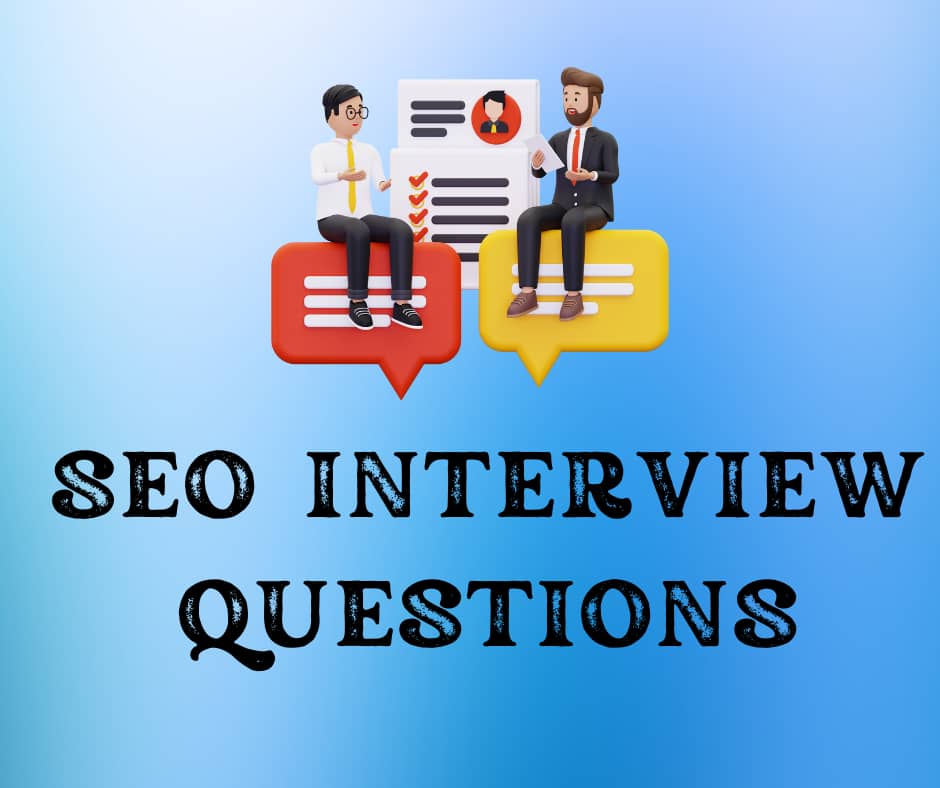
9. What are the Backlinks?
Backlinks are links from other websites to your own. They are also known as inbound links or incoming links. Backlinks are important for search engine optimization (SEO) because they are seen as a vote of confidence in your website’s quality and authority. The more high-quality backlinks you have, the higher your website is likely to rank in search results.
10. How would you understand and analyze your Competitors’ Backlinks?
To understand and analyze my competitors’ backlinks, I would use the following steps:
Identify my competitors.
Find my competitors’ backlinks.
Analyze my competitors’ backlinks.
The quality of the backlinks.
The relevance of the backlinks.
The anchor text of the backlinks.
Identify opportunities.
11.What are the Difference Between On-Page SEO and Off-Page SEO?
On-page SEO and off-page SEO are two different but equally important aspects of search engine optimization (SEO). On-page SEO focuses on optimizing your website’s content and structure to make it more attractive to search engines. Off-page SEO focuses on building backlinks to your website from other high-quality websites
On-page SEO is all about making your website the best it can be for users and search engines alike. This includes things like:
Writing high-quality, informative content that is relevant to your target keywords
Optimizing your page titles and meta descriptions
Using keywords throughout your content in a natural way
Using images and other multimedia element
Off-page SEO is about building relationships with other websites and getting them to link to yours. This is important because search engines see backlinks as a vote of confidence in your website.
The more high-quality backlinks you have, the higher your website will rank in search results.
Guest blogging
Promoting your content on social media
Building relationships with other website owners
12. How Do You work on Keyword Research?
Identify my business goals. What do I want to achieve with my keyword research? Am I trying to increase traffic to my website, generate leads, or make sales? Once I know my goals, I can tailor my keyword research accordingly.
Brainstorm a list of seed keywords
Use a keyword research tool to expand my list of keywords.
Analyze my keywords.
Choose my keywords:
Once I have analyzed my keywords, I need to choose the ones that are most relevant to my business and that have the potential to drive results.
13.What Are the Rich Snippets?
Rich snippets are enhanced search results that display additional information about a website beyond the standard title, URL, and description. This information can include things like product reviews, star ratings event dates, and recipe ingredients. Rich snippets can help your website stand out in search results and attract more clicks.
14. What Are the Meta Tags?
Meta tags are snippets of text that provide information about a web page to search engines. They are embedded in the HTML code of a web page and are not visible to users.
Meta tags can be used to control how a web page is displayed in search results, such as the title, description, and keywords.
15.How can you find a Website’s Organic Traffic?
Use a website traffic analyzer tool.: Google Analytics, Semrush, and Ahrefs. These tools can provide you with detailed information about a website’s traffic, including organic traffic
Look at the website’s backlink profile: Backlinks are links from other websites to a particular website:
Analyze the website’s search engine ranking.: For example, a website that ranks in the top 10 for a popular keyword is likely to receive a lot of organic traffic from that keyword.
Use a keyword research tool Keyword research tools can help you identify the keywords that a website is ranking for and the estimated search volume for those keywords
14. Where do we use keywords?
Website content: Keywords can be used throughout your website content, including in the title tags, meta descriptions, header tags, and body text
URL structure: Keywords can also be used in your website’s URL structure. This is a good way to make your URLs more descriptive and user-friendly.
Image alt text: Alt text is the text that is displayed when an image cannot be loaded. It is also used by search engines to index images
15.What Is a Canonical Tag?
A canonical tag is a piece of HTML code that tells search engines which version of a web page is the “preferred” version.
This is useful when you have multiple versions of the same page, such as a page with multiple parameters or a page that is available in both English and Spanish.
16. What are the Redirects?
A redirect is a way to send users and search engines from one URL to another. This can be useful for a variety of reasons,
Moving a page to a new URL: If you move a page to a new URL, you can use a redirect to tell users and search engines where the new page is located.
Combining duplicate pages : If you have duplicate pages on your website, you can use a redirect to combine them into a single page.
Creating a custom URL: If you want to create a custom URL for a page, you can use a redirect to point the custom URL to the actual page
17. What Is the Difference between a 301 and a 302 Redirect?
301 redirect: A 301 redirect is a permanent redirect. This means that the old URL is now permanently redirected to the new URL. Search engines will follow 301 redirects and will update their index to reflect the new URL.
302 redirect: A 302 redirect is a temporary redirect. This means that the old URL is temporarily redirected to the new URL.
Search engines will follow 302 redirects, but they will keep the old URL in their index.
18.What Is Crawling?
Crawling is the process by which search engines discover new and updated pages on the web. Search engines use web crawlers, also known as spiders, to follow links from one page to another.
Crawling is an important part of search engine optimization (SEO), as it is how search engines find and index your website’s pages. If your pages are not crawled, they will not appear in search results.
19. How can You Check Whether a Website Is Indexed by Google?
There are a few ways to check whether a website is indexed by Google:
Use the Google Search Console. The Google Search Console is a free tool from Google that allows website owners to track their website’s performance in search results. To check whether a website is indexed by Google using the Google Search Console, follow these steps:
Log in to the Google Search Console.
Select the website you want to check.
Click on the “Index” tab.
Click on the “Coverage” report.
The Coverage report will show you which pages on your website are indexed by Google and which pages are not indexed.
Use the Google search engine. You can also use the Google search engine to check whether a website is indexed by Google. To do this, simply type the following into the Google search bar:
20.Why the Local SEO Important?
Local SEO is important because it helps businesses attract customers who are looking for their products or services in their local area. When people search for something online, they often add their location to the search query. For example, someone might search for “coffee shops near me” or “best restaurants in San Francisco.
“Here are some specific benefits of local SEO:
Increased visibility: More targeted lead
Improved customer engagement:
Increased brand awareness:
Improved sales
21. What Is Anchor Text?
Anchor text is the visible, clickable text in a hyperlink. It is the text that users see when they hover over a link, and it is also the text that search engines use to understand the context of the link.
Anchor text is important for both users and search engines. For users, it helps them to understand what the linked page is about and whether it is relevant to their search query. For search engines, anchor text provides context for the linked page and helps them to determine the relevance of that page to the search query.
22. What Is Robots.txt File?
A robots.txt file is a text file that tells web robots (typically search engine robots) how to crawl pages on your website. The robots.txt file is part of the robots exclusion protocol (REP), a group of web standards that regulate how robots crawl the web, access and index content, and serve that content up to users.
The robots.txt file is located at the root of your website, which means that it can be found at the following URL:
23. What Is Sitemap?
A sitemap is a file that lists all of the pages on a website, and how they are related to each other. Sitemaps can be used by both search engines and users to navigate a website more easily.
Search engines use sitemaps to discover new pages on a website and to understand how they are related to each other. This helps search engines to index a website more accurately and efficiently
24.Tell me the Difference Between a Do Follow vs. a No follow link?
The main difference between a dofollow and a nofollow link is that a dofollow link tells search engines to follow the link and pass on link equity, while a nofollow link tells search engines not to follow the link and not to pass on link equity.
Link equity is a term used to describe the value that a website or page passes on to other websites or pages through links
25. How Can You search the Ranking Difficulty for a Keyword?
There are a few ways to search the ranking difficulty for a keyword:
Use a keyword research tool.
Look at the search results for the keyword
Use a keyword difficulty checker tool.
26. What Are Long-Tail Keywords?
Long-tail keywords are more specific and less competitive than short-tail keywords. They are usually made up of three or more words and are more likely to be used by people who are closer to making a purchase. For example, instead of searching for “shoes,” someone might search for “comfortable running shoes for women with flat feet.”
Long-tail keywords are important for SEO because they can help you attract more targeted traffic to your website. When you rank for long-tail keywords, you are more likely to be found by people who are interested in what you have to offer.
27. What Is 404 Error?
A 404 error, also known as a “page not found” error, is an HTTP status code that means that the server cannot find the requested page. This can happen for a variety of reasons, such as:
The page has been moved or deleted.
The page has been misspelled in the URL.
The page is behind a firewall or other security restriction
The server is experiencing technical difficulties
for more SEO Questions
28.What Is the Page Speed and Why Does It Matter for SEO?
Page speed is the amount of time it takes for a web page to load completely. It’s important for both users and search engines.
29.Why is page speed important for SEO?
Google has confirmed that page speed is a ranking factor. This means that faster-loading pages are more likely to rank higher in search results. Google wants to provide users with the best possible experience, and faster-loading pages provide a better experience.
30.How can You Measure the Authority of a Website?
There are a few ways to measure the authority of a website. Here are some of the most common methods
Domain Authority (DA): DA is a metric developed by Moz that predicts how well a website will rank in search engine results pages (SERPs). It’s based on a number of factors, including the number and quality of backlinks to the website.
Page Authority (PA): PA is a similar metric developed by Moz that predicts how well a specific page on a website will rank in SERPs. It’s based on the same factors as DA, but it also takes into account the authority of the page’s backlinks.
Ahrefs Domain Rating (DR): DR is a metric developed by Ahrefs that’s similar to DA. It’s based on the number and quality of backlinks to a website, as well as the authority of the linking domains.
Organic traffic: The amount of organic traffic a website receives can be a good indicator of its authority. Organic traffic is traffic that comes from search engines, and it’s typically generated by high-quality websites that are relevant to the searcher’s query.
Social media engagement: The amount of social media engagement a website receives can also be a good indicator of its authority. Social media engagement includes likes, shares, and comments.
31. How can You Optimize a Title Tag?
To optimize a title tag, you should
:Keep it short and to the point. Search engines typically display only the first 50-60 characters of a title tag in SERPs, so it’s important to get your most important information in first.
Include your target keyword. Your title tag should include your target keyword, which is the phrase you want your page to rank for in search results. This will help search engines understand what your page is about and make it more likely to rank for that keyword
Make it unique and descriptive. Your title tag should be unique and descriptive of your page’s content. This will help users understand what your page is about and make it more likely to click on it in SERPs.
Avoid keyword stuffing. Keyword stuffing is the practice of overloading your title tag with keywords. This can make your title tag look Spammy to search engines and users, and it can actually hurt your ranking.
32. Tell me Some Link Building Strategies?
Here are some link building strategies:
Create high-quality content. The best way to attract links is to create high-quality content that is informative, engaging, and relevant to your target audience. When people find your content valuable, they are more likely to link to it.
Guest blogging. Guest blogging is a great way to get your content in front of a new audience and build links from high-quality websites. When you guest blog, you write an article for another website in your industry. Be sure to include a link back to your website in your author bio
Broken link building. Broken link building is the process of finding broken links on other websites and reaching out to the website owners to suggest that they replace the broken link with a link to your website. This is a great way to build links from high-quality websites that are already relevant to your industry
.Link reclamation. Link reclamation involves finding websites that have linked to your website in the past but the links are no longer working. You can reach out to the website owners and ask them to reinstate the links.
Directory listings. There are a number of online directories where you can list your website. Listing your website in directories is a great way to get backlinks from high-quality websites.
Social media. Social media is a great way to promote your content and build links. Be sure to share your content on social media and encourage your followers to share it as well.
33. How can You Submit a Sitemap to Google?
To submit a sitemap to Google, you can use Google Search Console.
Go to Google Search Console and sign in
.Select your website
.Click on the ‘Sitemaps’ tab
Click on the ‘Add a new sitemap’ button.
Enter the URL of your sitemap.
Click on the ‘Submit’ button.
Google will then process your sitemap and start indexing the pages in your sitemap.
34. What Are the SERP Features?
SERP features are elements that appear on Google’s search engine results page (SERP) that go beyond the traditional “10 blue links”. Common examples of SERP features include Featured Snippets, Knowledge Panels, video carousels and image packs.
Here are some of the most common SERP features
:Featured Snippets: Featured Snippets are large boxes that highlight a specific section of a webpage. They are typically displayed at the top of the SERP and are meant to provide a quick and concise answer to the user’s query
.Knowledge Panels: Knowledge Panels are boxes that appear on the right side of the SERP and provide information about a specific topic. They can include information such as images, definitions, and links to related websites.
Video Carousels: Video Carousels are a set of video results that appear in the SERP. They are typically displayed below the Featured Snippet and Knowledge Panel.
Image Packs: Image Packs are a set of image results that appear in the SERP. They are typically displayed below the Video Carousel
.People Also Ask: People Also Ask is a box that appears below the main search results and provides links to frequently asked questions related to the user’s query
.Local Packs: Local Packs are a set of local search results that appear in the SERP. They are typically displayed below the People Also Ask box and include information such as the name, address, and phone number of local businesses.
Google is constantly adding new SERP features, so it is important to stay up-to-date on the latest changes. You can learn more about SERP features on the Google Search Console website.
35. Why Is the Meta Description Important?
The meta description is important because it is a brief snippet of text that appears below your website’s title in search engine results pages (SERPs). It is a great opportunity to describe your page and entice users to click on it.
Here are some of the reasons why the meta description is important
It helps users to understand what your page is about. The meta description is a short and to-the-point summary of your page’s content. It helps users to quickly understand what your page is about and whether it is relevant to their search query.
It can improve your click-through rate (CTR). The CTR is the percentage of users who click on your website’s listing in the SERPs. A well-written meta description can help to improve your CTR by enticing users to click on your listing.
It can help to improve your website’s ranking in search engine results pages (SERPs). Google has confirmed that the meta description is a ranking factor. This means that a well-written meta description can help to improve your website’s ranking in the SERPs.
36. What is the meta title in SEO?
The meta title, also known as the title tag, is a short snippet of text that appears in search engine results pages (SERPs) and browser tabs. It is one of the most important SEO elements, as it is what users see first when they encounter your website in the SERPs.
The meta title should be unique and descriptive of each page on your website. It should also include your target keyword, which is the keyword that you want your page to rank for in the SERPs.
37.Tel me about Image Alt Text?
Image alt text, also known as alt attributes, are brief descriptions of images that are used by screen readers and other assistive technologies to convey the meaning of images to users who cannot see them. Alt text is also displayed in place of images if they cannot be loaded for any reason
.In addition to making your website more accessible, alt text can also improve your website’s SEO. Search engines use alt text to better understand the content of your images and to index them accordingly. This can help your website to rank higher in search results for images.
When writing alt text, it is important to be descriptive and specific. Avoid using generic alt text such as “image of a cat” or “picture of a tree.” Instead, try to describe the image in a way that would be helpful to someone who cannot see it. For example, instead of “image of a cat,” you could write “a black cat sitting on a red couch.”
38. What is the anchor text in SEO?
Anchor text is the visible text of a hyperlink. It is the text that users click on to follow a link from one page to another. Anchor text is important for SEO because it helps search engines to understand the content of the linked page and how it is related to the linking page.
Anchor text can also be used to improve the click-through rate (CTR) of your links. A well-written anchor text can be more enticing to users and make them more likely to click on your link. For example, instead of using the anchor text “click here,” you could use the anchor text “learn more about SEO basics.” This anchor text is more descriptive and informative, and it is more likely to entice users to click on your link.
39. What Are the Some Popular SEO Myths?
Here are some popular SEO myths:
SEO is only for big businesses. This is not true. SEO can benefit businesses of all sizes. Even small businesses can improve their visibility and organic traffic with a well-executed SEO strategy.
SEO is a one-time thing. Once you have implemented SEO best practices, you need to continue to monitor and update your strategy. Search engine algorithms are constantly changing, so it’s important to stay up-to-date on the latest trends and best practices.
You need a lot of backlinks to rank well. While backlinks are an important ranking factor, they are not the only factor. Other factors such as the quality of your content, the relevance of your keywords, and your website’s usability also play a role in your ranking
You can pay Google to rank higher in search results. There is no such thing as paid ranking in Google’s organic search results. Paid search results are completely separate from organic search results.
SEO is dead. SEO is not dead. It is still one of the most effective ways to improve your website’s visibility and organic traffic.
It is important to be aware of these SEO myths so that you can avoid making mistakes that could hurt your website’s ranking. If you are unsure about something, it is always best to consult with an SEO expert.
40. How Do You know Whether the Structured Data on Your Webpage Is Valid and Has No Errors?
There are two ways to know whether the structured data on your webpage is valid and has no errors:
Use a structured data testing tool. There are a number of structured data testing tools available online, such as Google’s Structured Data Testing Tool and Schema.org’s Schema Markup Validator. These tools can help you to identify any errors in your structured data and to make sure that it is valid.
Check your structured data in Google Search Console. Google Search Console is a free tool from Google that allows you to monitor your website’s performance in Google Search. You can use Google Search Console to check your structured data and to see if there are any errors.
To check your structured data in Google Search Console, follow these steps:
Go to Google Search Console and sign in.
Select your website
.Click on the ‘Enhancements’ tab.
Click on the ‘Structured data’ report.
41. How Do You check a Keyword’s Search Intent?
Search intent is the reason why someone is searching for a particular keyword. It’s important to understand search intent when you’re creating content or doing SEO, because it can help you to create content that is relevant to what people are looking for.
There are a few ways to check a keyword’s search intent:
Look at the top-ranking results for the keyword. What type of pages are ranking at the top? Are they articles, blog posts, product pages, or something else? This can give you a good idea of what type of content people are looking for when they search for that keyword.
Use a keyword research tool. There are a number of keyword research tools available, such as Google Keyword Planner and Ahrefs Keyword Explorer. These tools can provide you with data on the search volume and competition for different keywords, as well as the types of searches that people are doing for those keywords.
Think about the keyword itself. What does the keyword suggest about the user’s intent? For example, if someone is searching for the keyword “how to make a cake,” they are likely looking for informational content. If someone is searching for the keyword “buy a cake online,” they are likely looking for a transactional website.
42. What Was the Latest Google Algorithm Update?
The latest Google algorithm update is the August 2023 Helpful Content Update. It was announced on August 4, 2023, and began rolling out on August 22, 2023. The Helpful Content Update is designed to improve Google’s ability to identify and rank helpful content.
Google says that the Helpful Content Update is focused on rewarding content that is written primarily for humans, not search engines. Google wants to rank content that is informative, engaging, and relevant to the user’s query. Google says that the Helpful Content Update is focused on rewarding content that is written primarily for humans, not search engines.
Google wants to rank content that is informative, engaging, and relevant to the user’s query.
Focus on your target audience and what they need to know.
Write content that is informative, engaging, and relevant to the user’s query.
Avoid writing content that is primarily for search engines.
Be honest and transparent about your goals and motivations.
Stay up-to-date on the latest trends and developments in your field.
If you are creating content for your website, it is important to keep the Helpful Content Update in mind. By writing helpful content that is focused on your target audience, you can improve your chances of ranking well in Google search results. Stay up-to-date on the latest trends and developments in your field.
43.How can You Follow Any SEO Blogs & Websites?
There are a few ways to follow any SEO blogs and websites:
Subscribe to their email lists. This is the best way to make sure that you’re notified of new content as soon as it’s published. Most SEO blogs and websites have a subscribe form on their homepage or in their sidebar
.Follow them on social media. Many SEO blogs and websites are active on social media, such as Twitter, LinkedIn, and Facebook. By following them on social media, you’ll see their latest posts in your feed.
Use an RSS feed reader. An RSS feed reader is a tool that allows you to subscribe to the RSS feeds of multiple websites. This is a great way to stay up-to-date on new content from a variety of SEO blogs and websites
SEO Interview Questions & Answers for Experienced
What are the top ranking factors in SEO in 2023?
The top ranking factors in SEO in 2023 are:
High-quality content: This is the most important factor in SEO, and it’s what will help you to rank higher in search results pages (SERPs). Your content should be informative, engaging, and well-written. It should also be relevant to your target audience and the keywords they are searching for.
Backlinks: Backlinks are links from other websites to your own. The more high-quality backlinks you have, the more authoritative your website will appear to search engines.
Domain authority: Domain authority is a measure of how authoritative and trustworthy your website is. It’s based on a number of factors, including the age of your domain, the number of backlinks you have, and the quality of those backlinks
.Page speed: Page speed is the amount of time it takes for your web page to load. Search engines prefer websites that load quickly, so it’s important to optimize your website for speed.
Mobile-friendliness: More and more people are using their smartphones and tablets to search the web, so it’s important to make sure that your website is mobile-friendly. This means that your website should be easy to navigate on a mobile device and that your content should be formatted correctly.
How to use Google Autocomplete for SEO?
Google Autocomplete is a feature that suggests search terms as you type them into the Google search bar. It’s a great way to discover new keywords and search terms that people are using to find information like yours.
Here are a few ways to use Google Autocomplete for SEO
Identify new keywords: Type in a broad keyword related to your business and see what suggestions Google Autocomplete provides. You can also use the asterisk wildcard to generate more specific suggestions. For example, if you type in “SEO”, Google Autocomplete will suggest keywords like “SEO tips”, “SEO for beginners”, and “SEO tools”.
Analyze keyword competition: The number of suggestions that Google Autocomplete provides can give you and idea of how competitive a keyword is. If there are a lot of suggestions, it means that the keyword is more competitive. If there are only a few suggestions, it means that the keyword is less competitive.
Understand search intent: Google Autocomplete can also help you to understand the search intent of people who are searching for certain keywords. For example, if you type in “how to start a blog”, Google Autocomplete will suggest keywords like “how to start a blog for free” and “how to start a blog without coding”.
This tells you that people who are searching for this keyword are interested in learning how to start a blog, but they may not have any prior experience.
What are geo-targeted keywords in SEO? Explain with an example.
Geo-targeted keywords are keywords that include a specific geographic location. They are used to target people who are searching for local businesses or services.
For example, if you own a pizza restaurant in San Francisco, you might use geo-targeted keyword Restaurant in San Francisco like “pizza delivery in San Francisco” or “best pizza in San Francisco.” Geo-targeted keywords can be very effective in improving your website’s ranking in search results pages (SERPs) for local searches. This is because search engines like Google want to provide users with the most relevant results possible, and geo-targeted keywords help them to do that. ex Restaurant in San FranciscoWhat is a session in Google Analytics?
A session in Google Analytics is a group of user interactions with your website that take place within a given time frame. For example, a single session can contain multiple page views, events, social interactions, and ecommerce transactions.
Sessions are important for tracking how users interact with your website and measuring the effectiveness of your marketing campaigns. By understanding how users are using your website, you can make changes to improve their experience and increase your conversion rate.
How Do You Work with Developers to Implement SEO Suggestions
Start by understanding the development process. This will help you to communicate your SEO suggestions in a way that is clear and actionable
Schedule a meeting with the developers to discuss your SEO recommendations. This meeting is a great opportunity to answer any questions they may have and to get their buy-in on your suggestions.
Prioritize your SEO recommendations. Not all SEO recommendations are created equal. Some are more important and urgent than others.
Provide clear and concise instructions. When giving instructions to the developers, be as clear and concise as possible. Avoid using jargon or technical terms that they may not understand.
Set realistic expectations. Implementing SEO recommendations can take time, so it’s important to set realistic expectations with the developer
Test and monitor the results. Once the developers have implemented your SEO recommendations, it’s important to test and monitor the results. This will help you to see what’s working and what’s not.
14 Major Google Algorithm Updates in 2022-2023 for Best SEO

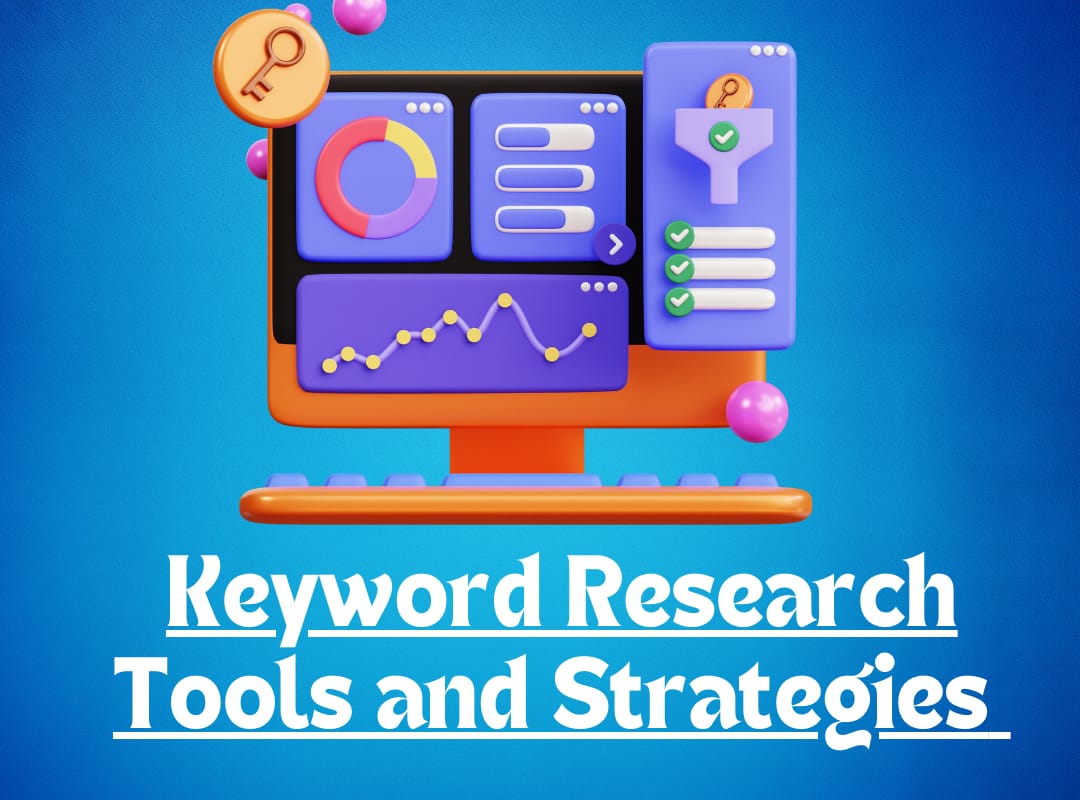

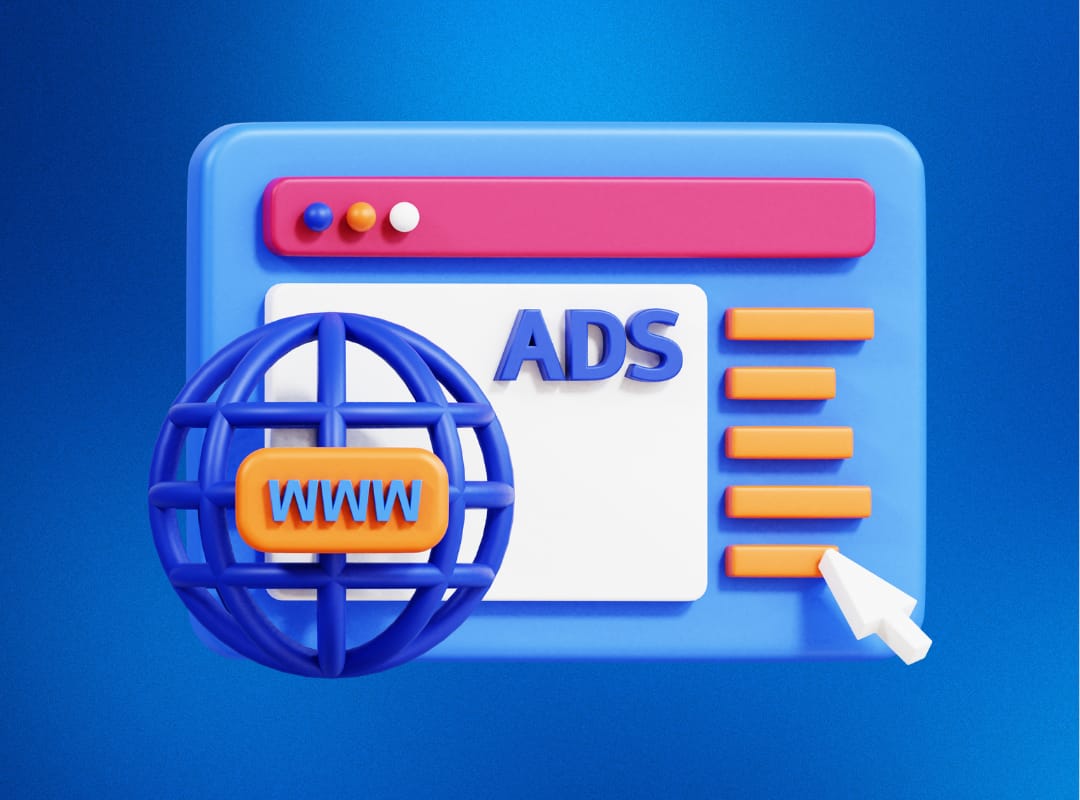
One Comment
Comments are closed.